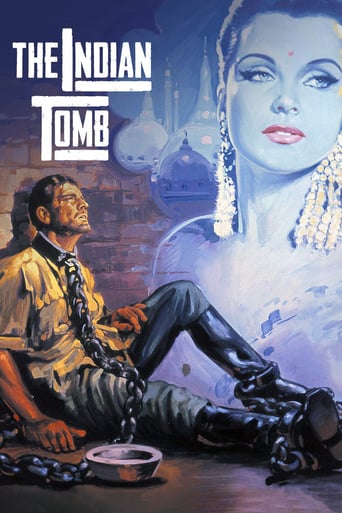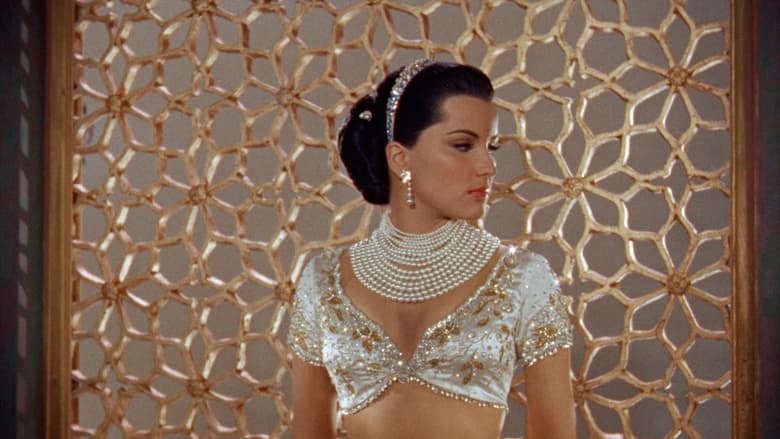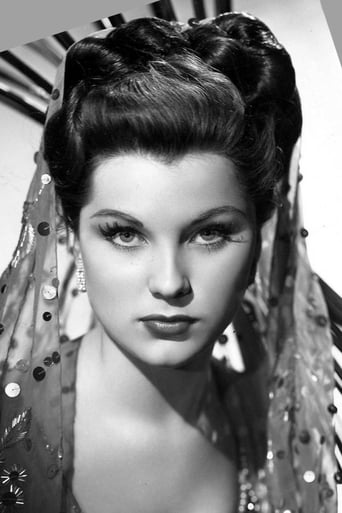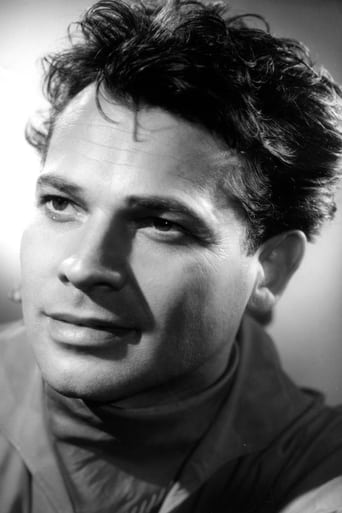The Indian Tomb (1959)
Seetha and Harold Berger are rescued from the desert by a caravan and brought to a small village. However, the greedy owner of the house where they are lodged betrays the law of hospitality and reveals their location to Prince Ramigani. The couple tries to escape but is hunted and captured by Ramigani and his men. Meanwhile Irene Rhode and her husband Walter Rhode suspect that Maharaja Chandra is not telling the truth about Harold's destiny. The conspirator Ramigani forces Seetha to accept to get married with Chandra to provoke the wrath of the priests and get the alliance of Prince Padhu and his army. In the meantime, Harold succeeds in escaping from the dungeon and seeks out Seetha to save her.
Watch Trailer
Cast


Reviews
Why so much hype?
If you don't like this, we can't be friends.
Admirable film.
This is a coming of age storyline that you've seen in one form or another for decades. It takes a truly unique voice to make yet another one worth watching.
Seetha (Debra Paget) and Harold Berger (Paul Hubschmid) are rescued from the desert by a caravan and brought to a small village. However, the greedy owner of the house where they are lodged betrays the law of hospitality and reveals their location to Prince Ramigani (René Deltgen). The couple tries to escape but is hunted and captured by Ramigani and his men. Meanwhile Irene Rhode (Sabine Bethmann) and her husband Walter Rhode (Claus Holm) suspect that Maharaja Chandra (Walter Reyer) is not telling the truth about Harold's destiny. The conspirator Ramigani forces Seetha to accept to get married with Chandra to provoke the wrath of the priests and get the alliance of Prince Padhu (Jochen Brockmann) and his army. In the meantime, Harold succeeds in escaping from the dungeon and seeks out Seetha to save her. "Das Indische Grabmal" is the delightful conclusion of a romantic adventure in the exotic India. This family movie seems to be a matinée with wonderful moments, like for example, the spider building its web and protecting the lovers after the offering of Seetha to her god Shiva; or the sexy dance of Seetha; or the maze in the underground of the palace; or the dead bodies without gore. The colors are splendidly restored in the DVD released in Brazil by Continental in the beautiful locations and sets, and it is possible to see the strings controlling the snake while Seetha is dancing. My vote is eight.Title (Brazil): "Sepulcro Indiano" ("Indian Tomb")
Avoid "Indian Tomb" unless you're ten or younger. This corny adventure film, although colorfully filmed on location in India, never rises to the occasion. The characters are all one-dimensional, especially the "hero" of the film. His role has barely any dialog and his action scenes are weak and unconvincing. The female lead is beautiful but looks about as "Indian" as Michelle Pfeiffer. The main Indian characters are mostly white actors in make-up! Their long, talky scenes will tempt you to press "fast-forward". Some parts are done well, such as the snake-dance and the leper cave, but they don't make up for long stretches of cardboard performances. The dialog the actors speak comes from a seventh-rate comic book. The head-priest character has a ridiculously dubbed voice. Though directed in 1959 by the usually great Fritz Lang, it more resembles a simplistic, lesser adventure serial from the 1930s. Lang bombed if he thought he was producing a work for mature audiences. I was very disappointed in this film. Suitable viewing for children and Fritz Lang completists only.
I just watched this on DVD--I wasn't aware of two important factors when I did. One, that this was a remake of a 1938 film, and two that it was actually the last part of a typical Lang epic-length film! I wonder how both films were ever condensed into a mere ninety minutes for domestic release? What an extraordinary feat in itself! I can see the influence on Speilburg and Luca quite clearly. This does have numerous external similarities to TEMPLE OF DOOM, as well as several motifs common to other Lang films.There are some amusing blunders. The Priest talks about Allah, then a few scenes later, cautions that THE GODS will be displeased. Islam is monothestic!There was a line uttered by the Priest: "There will be darkness over Eschanpur." That would have been a most intriguing title, nothing so bland as THE Indian TOMB, and would have also linked TIGERS OF ESCHANAPUR to this film. Both were released in that one 90 minute Americanized version, JOURNEY TO THE LOST CITY. As far as I could tell from this half, the city was far from "lost"! The Maharajah is proclaimed as RAJ of this state and that, master of the realms of Yadda-Yadda, and so on. I got out my map of India and was easily able to locate the areas he mentioned. I thoroughly enjoyed this film, and recommend it highly, especially to those who love a good rollicking adventure. I intend to secure the rights and bring this to the screen, before all the tigers are extinct.
The second part of "der Tiger von Eschnapur" begins with a de rigueur summary .Although it's the same movie divided into two for business concern,"das Indische Grabmal" surpasses its predecessor and makes it sometimes look like a trailer.All promises are fulfilled ;Everything Lang threatened to achieve in "der Tiger " materializes here.Here the two worlds (the luminous world of the maharajah and the subterraneans where the darkest secrets are hidden ) play an equal part .How can't we think of "Metropolis" when the lepers come up the stairs and force their way in the light of day?The maharajah is much more than a comic strip character here.He appears as a tortured man -the actor who plays this monarch is actually a German one,the one who plays count Andrassy is the "Sissi" saga-.Little by little ,we discover that he's in fact the real hero of the story-Mercier is absent during an hour in this part-:his evolution is downright intriguing .At the end of the story he found peace of mind in a completely unexpected way.Remarkable scenes :the spider that spins its web and thus protects the lovers;their enemies seen behind this providential shield.Paget's erotic dance in front of the snake (which echoes to the long scene in the first part when Mercier watches her dancing).And mainly, mainly,these labyrinthine subterraneans which may represent the dark side of the mind .The two worlds (he said that in "die Nibelungen" (1924),there were four worlds!) are a permanent feature in Lang's canon:of course "Metropolis " springs to mind.But think of the underworld of "M";the double life of Andrews in "beyond a reasonable doubt" ;the child's world and the adults' one in "Moonfleet";the "normal "side of life and the secret one beyond the door in the eponymous movie;real life and dream (but where is the frontier?) in "woman in the window" .Fritz Lang's holiday homework is actually his testament.He would do one more movie ("die tausend Augen des Doctor Mabuse"),but it seemed that,like his hero,he had found peace of mind in this movie.You can forget,unless you're a highbrow,his part in Godard's notorious "le mépris".Like John Huston or Joseph Mankiewicz ,Lang finished his career brilliantly.








